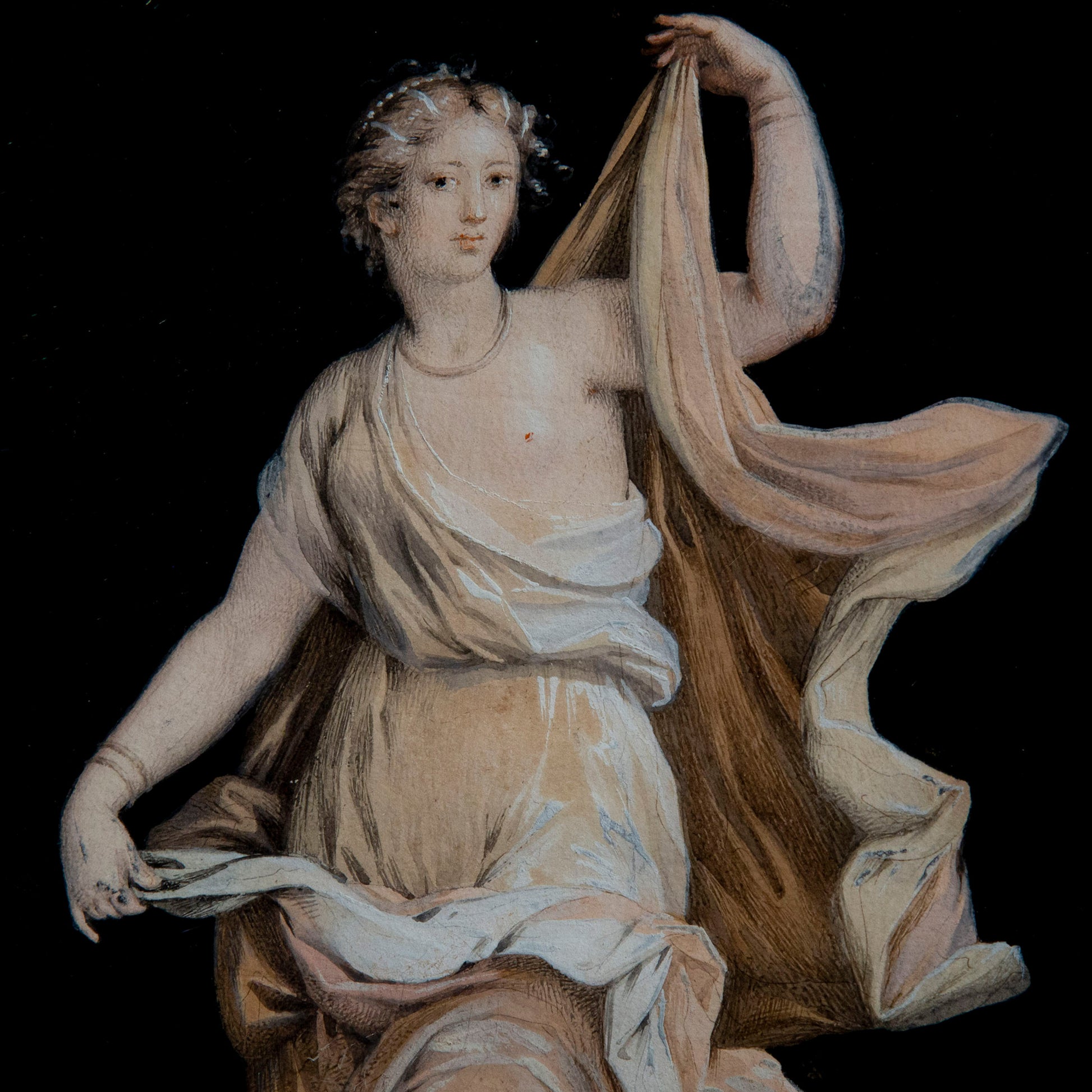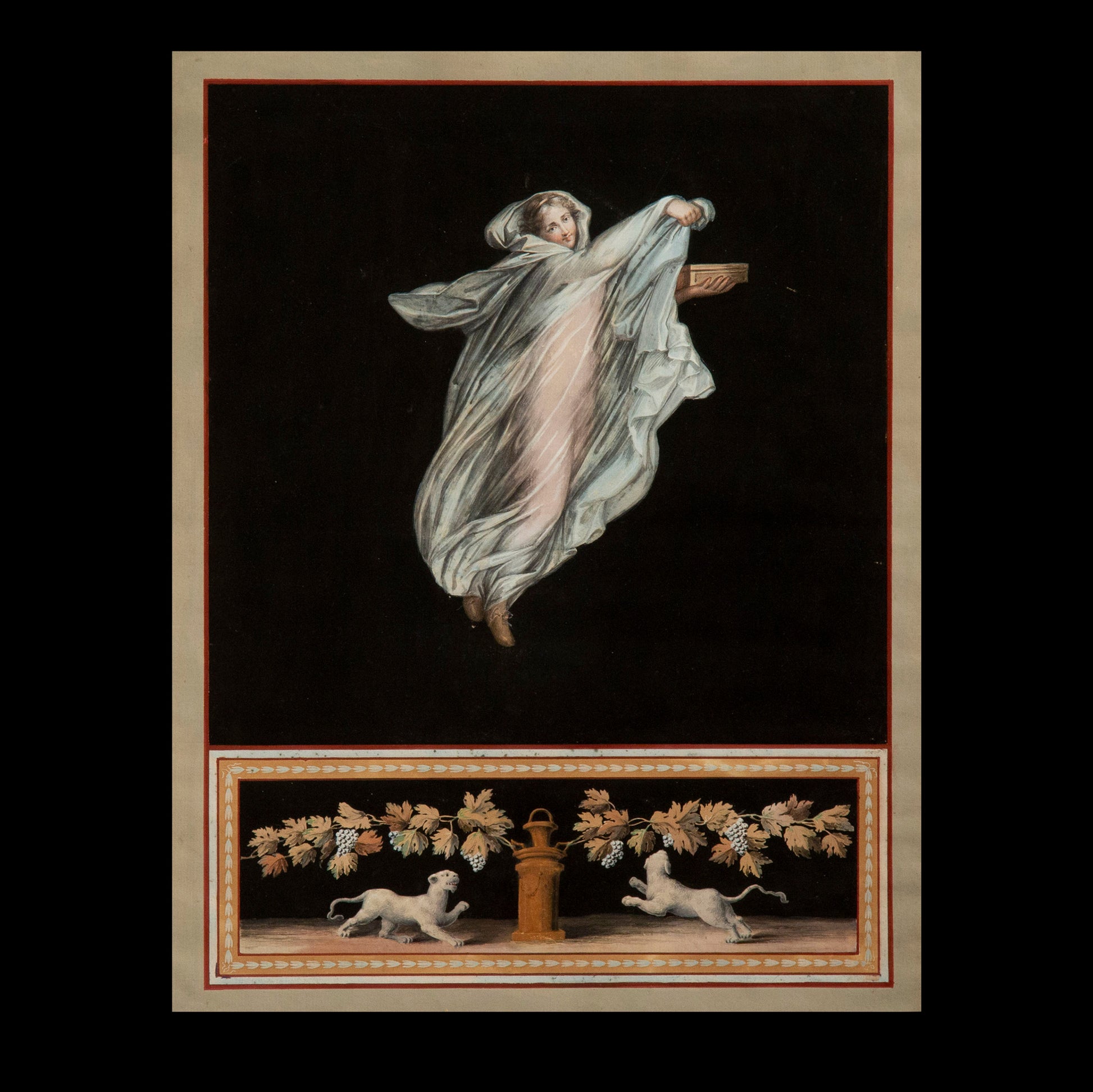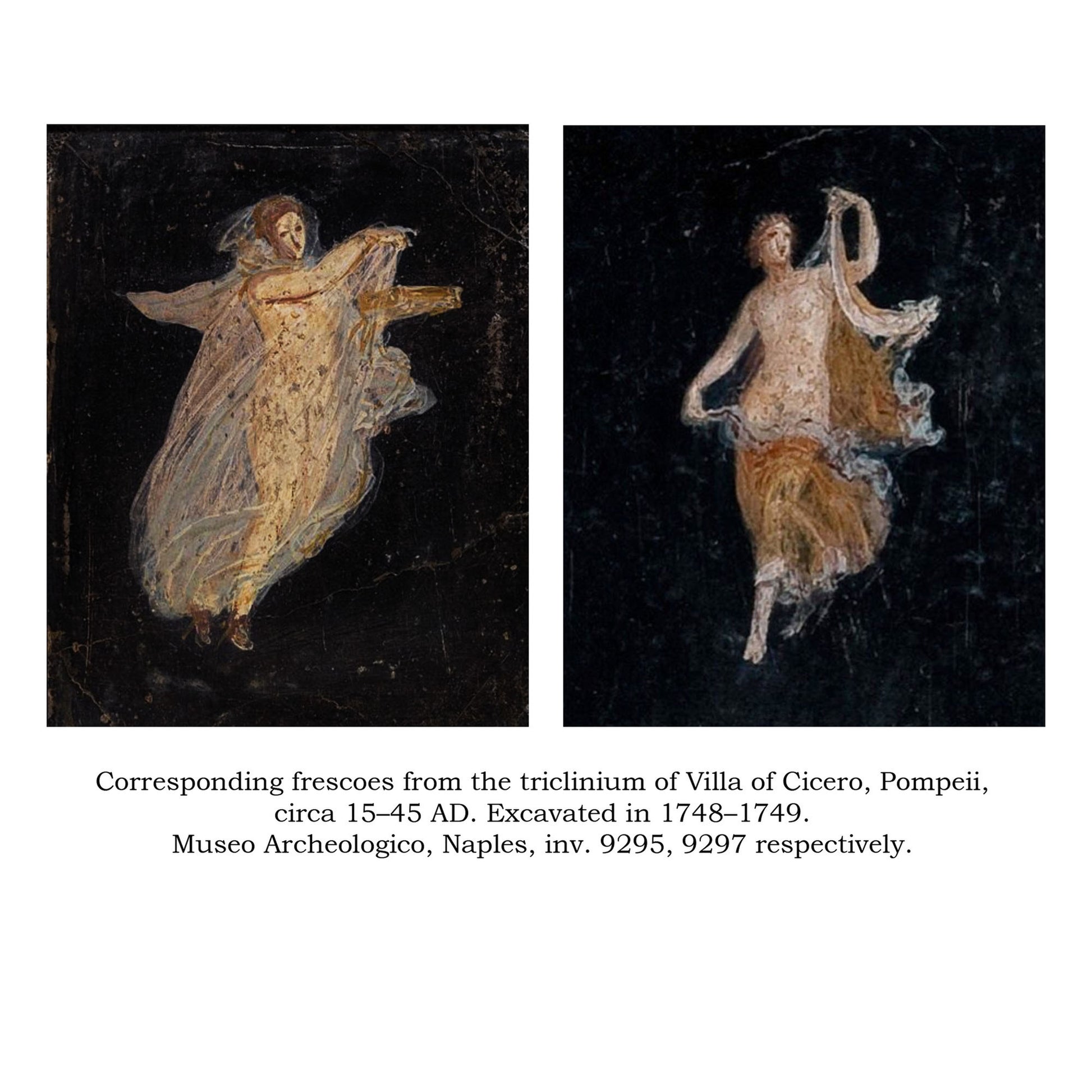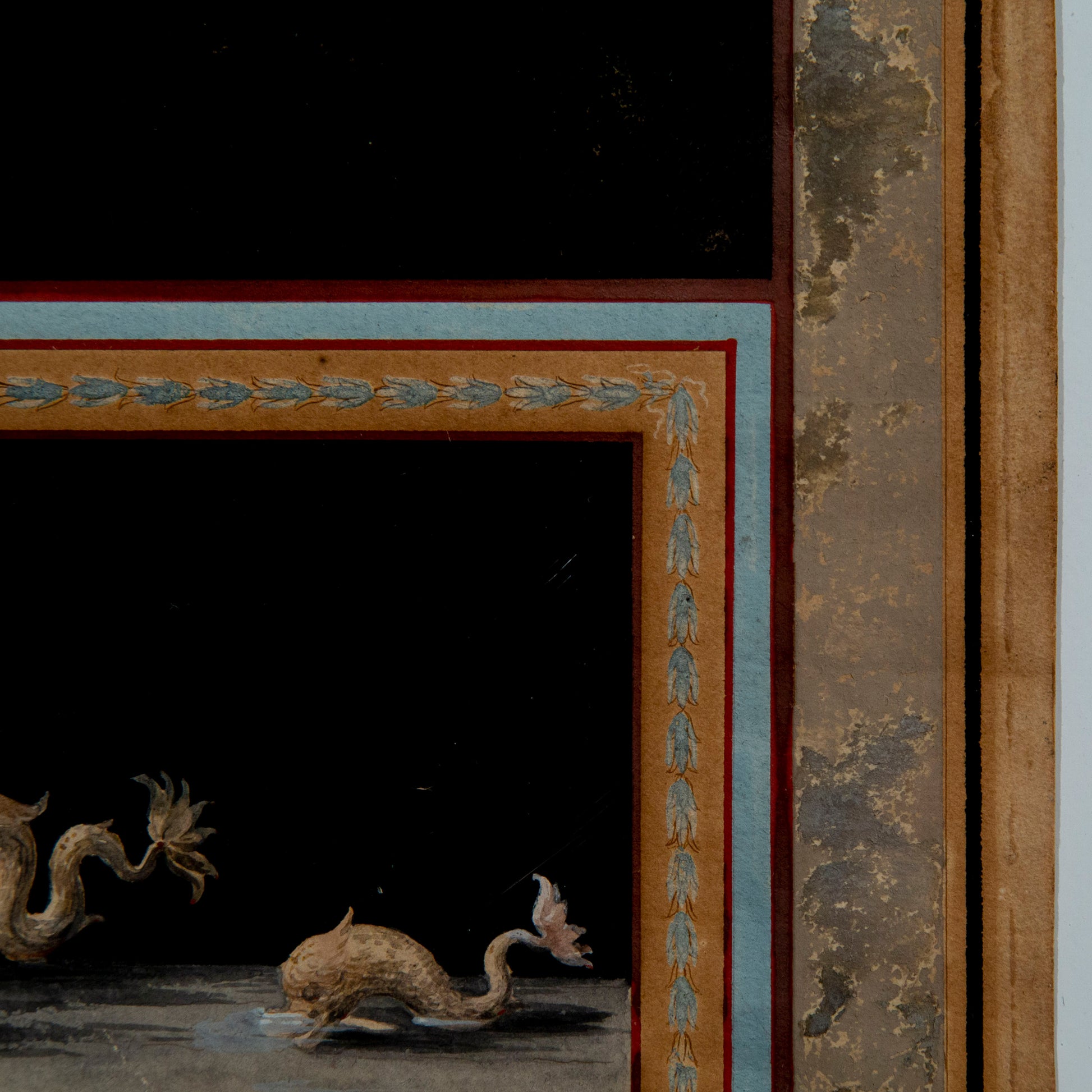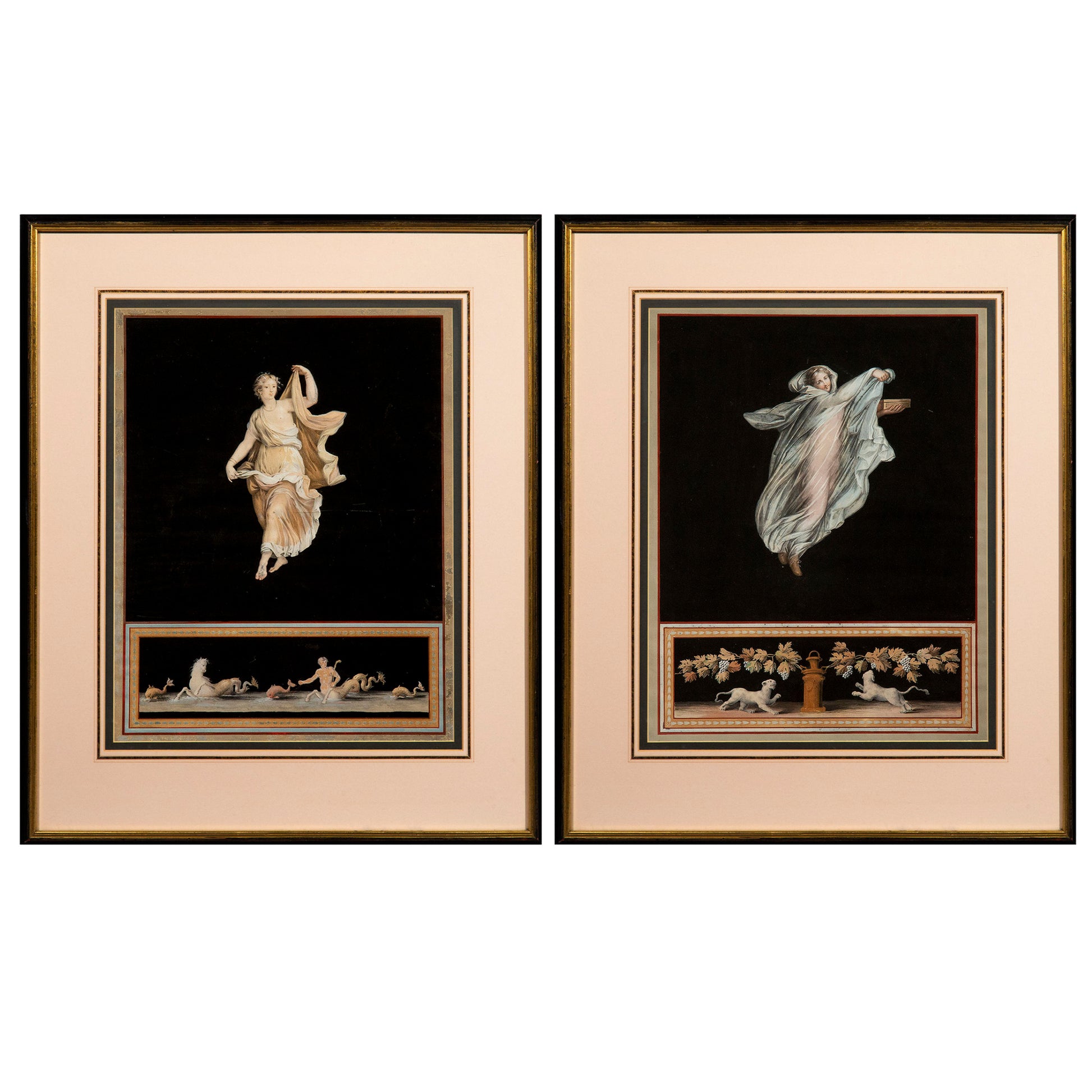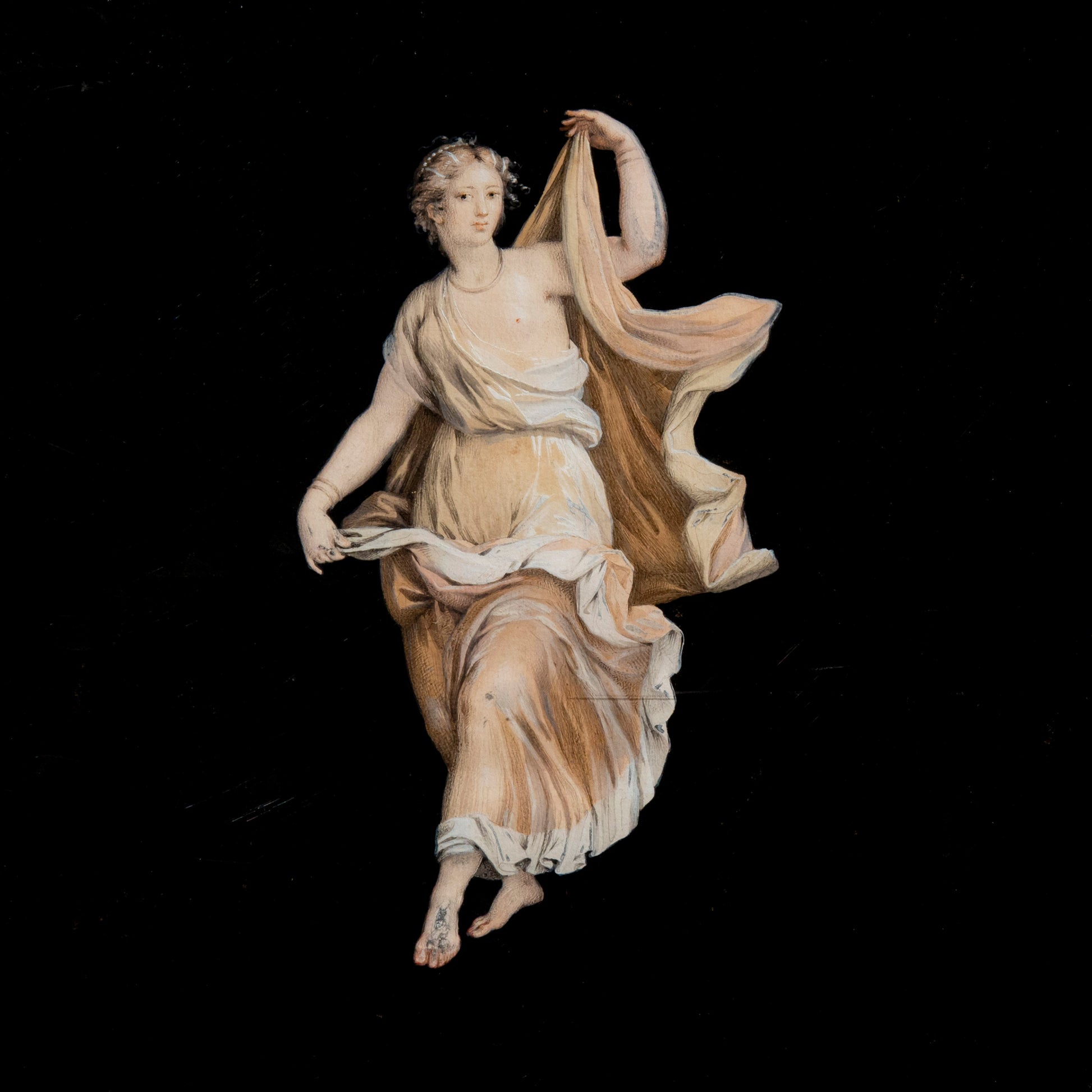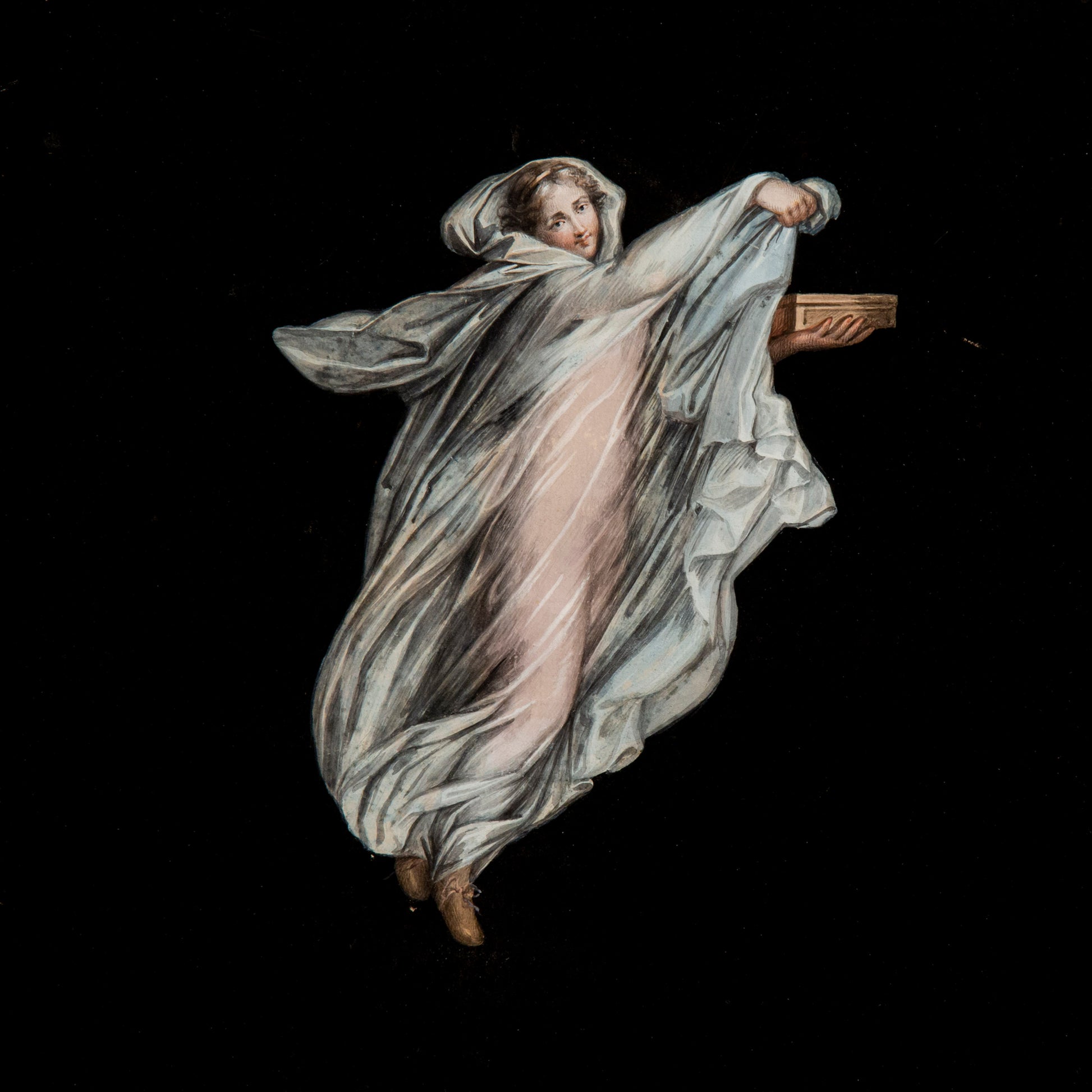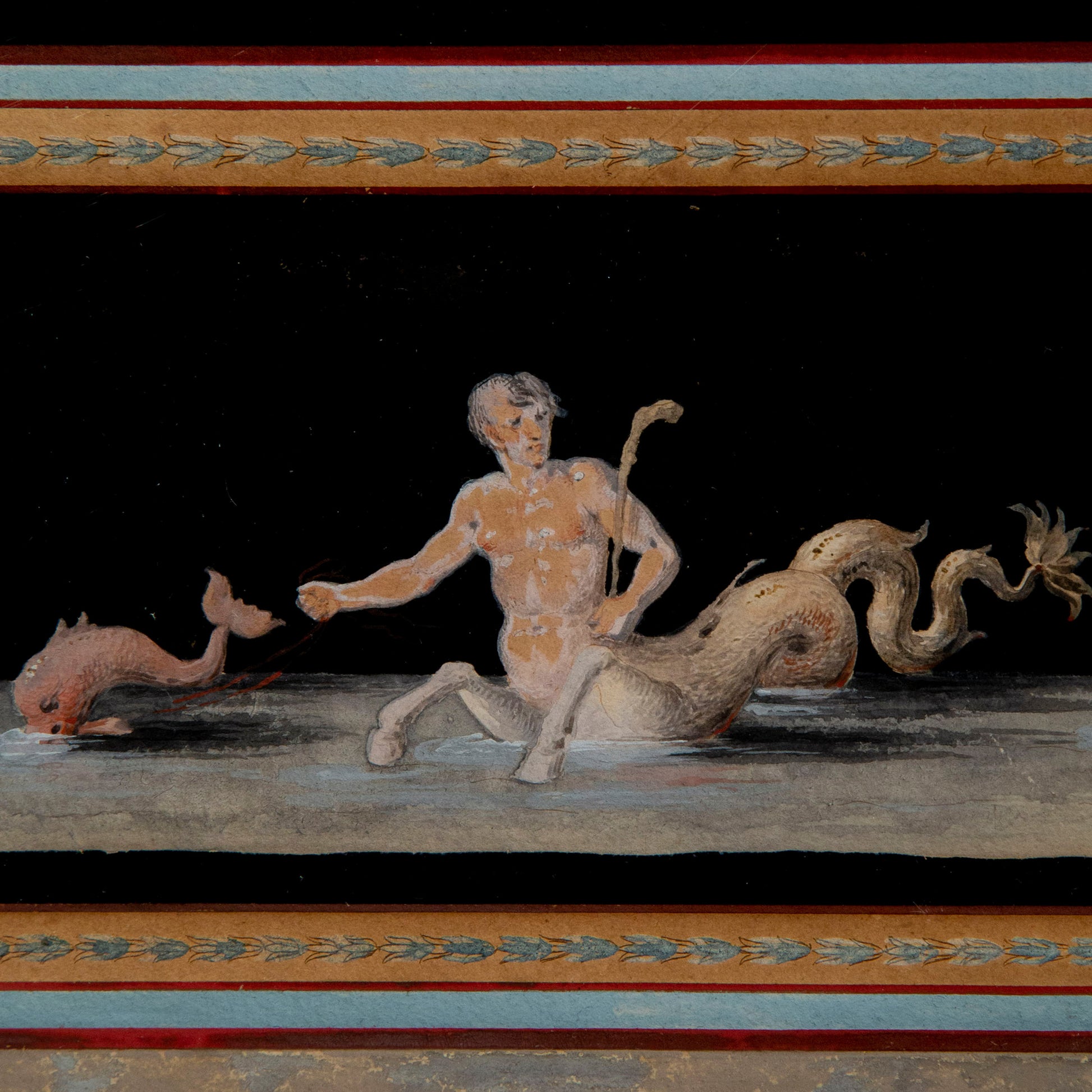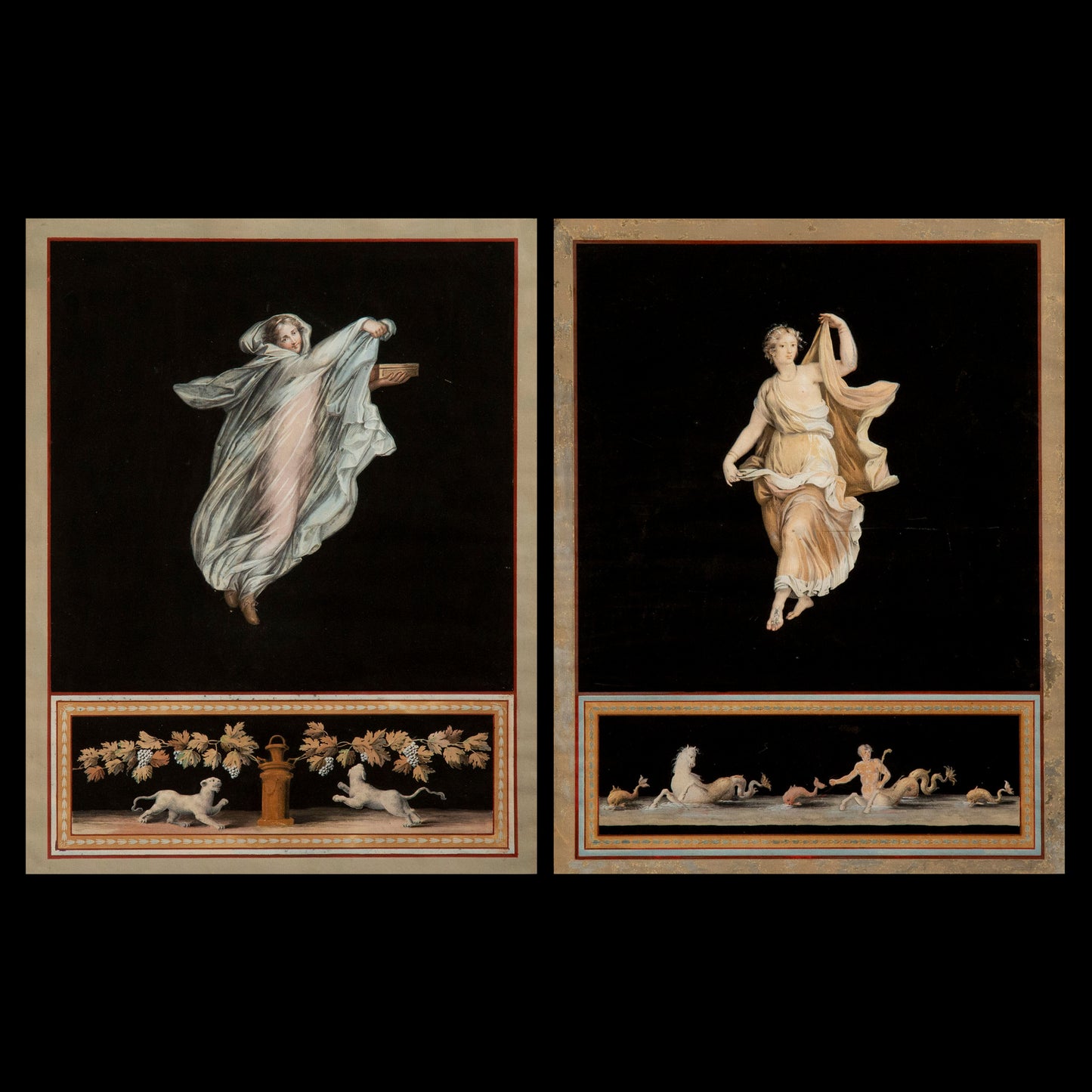
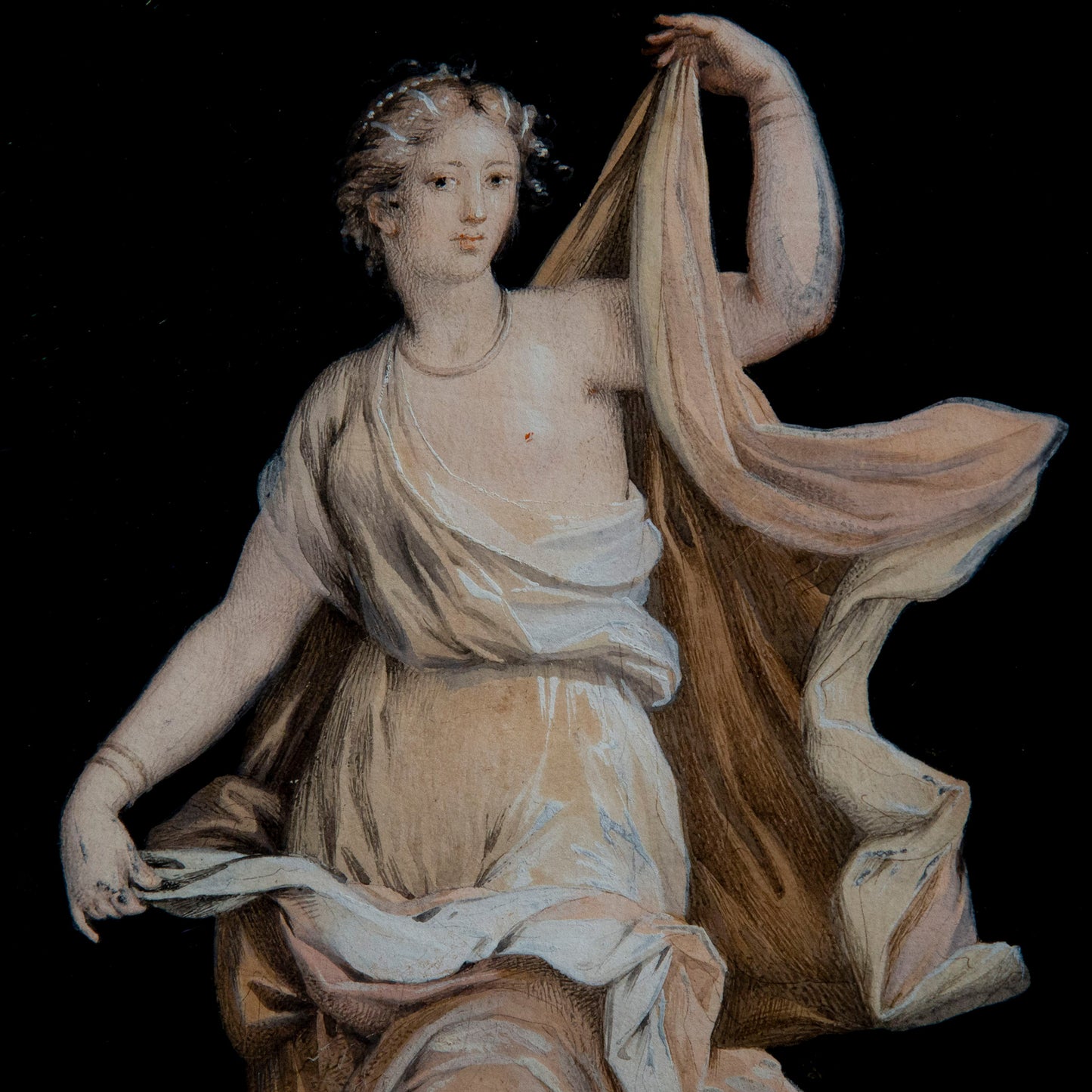
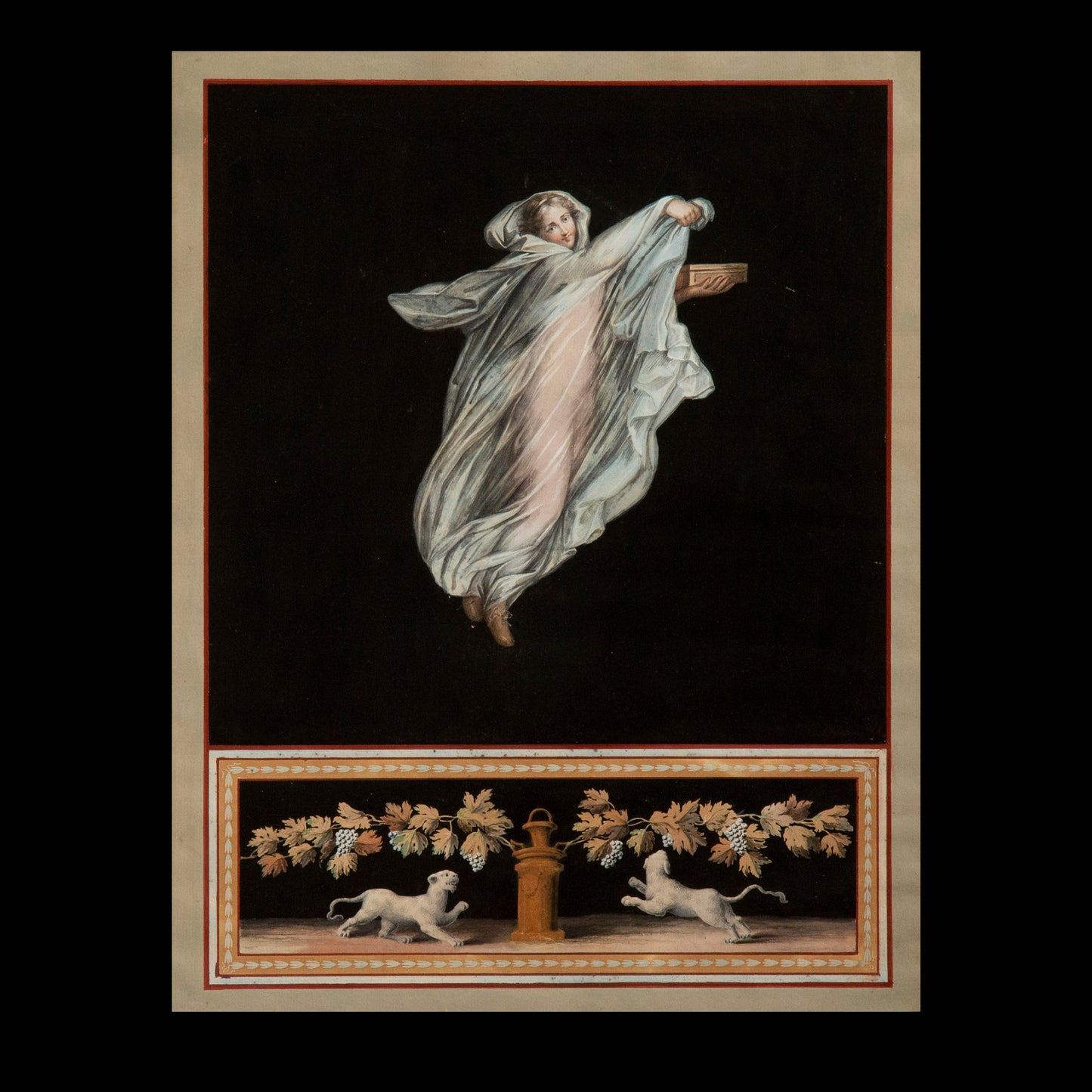



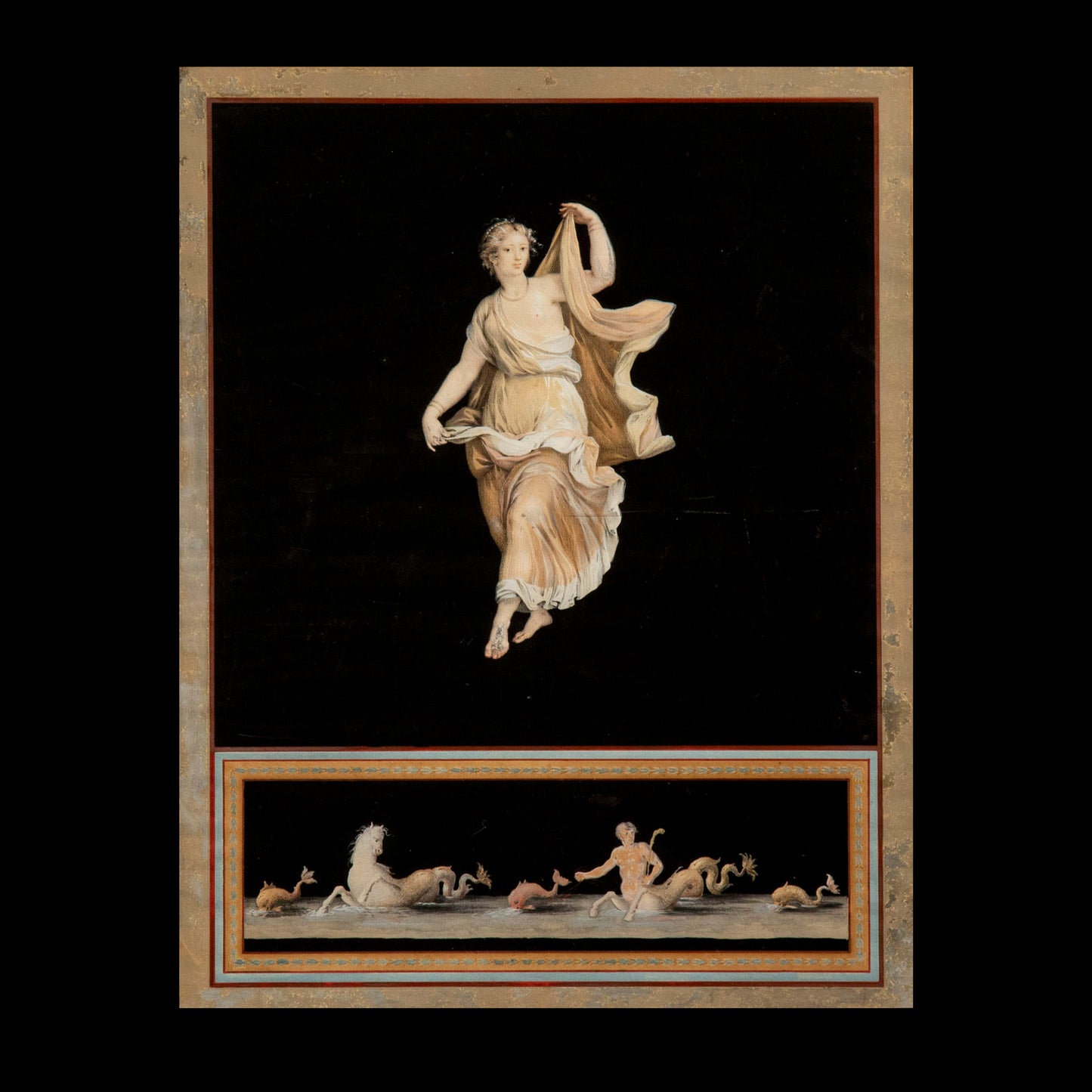
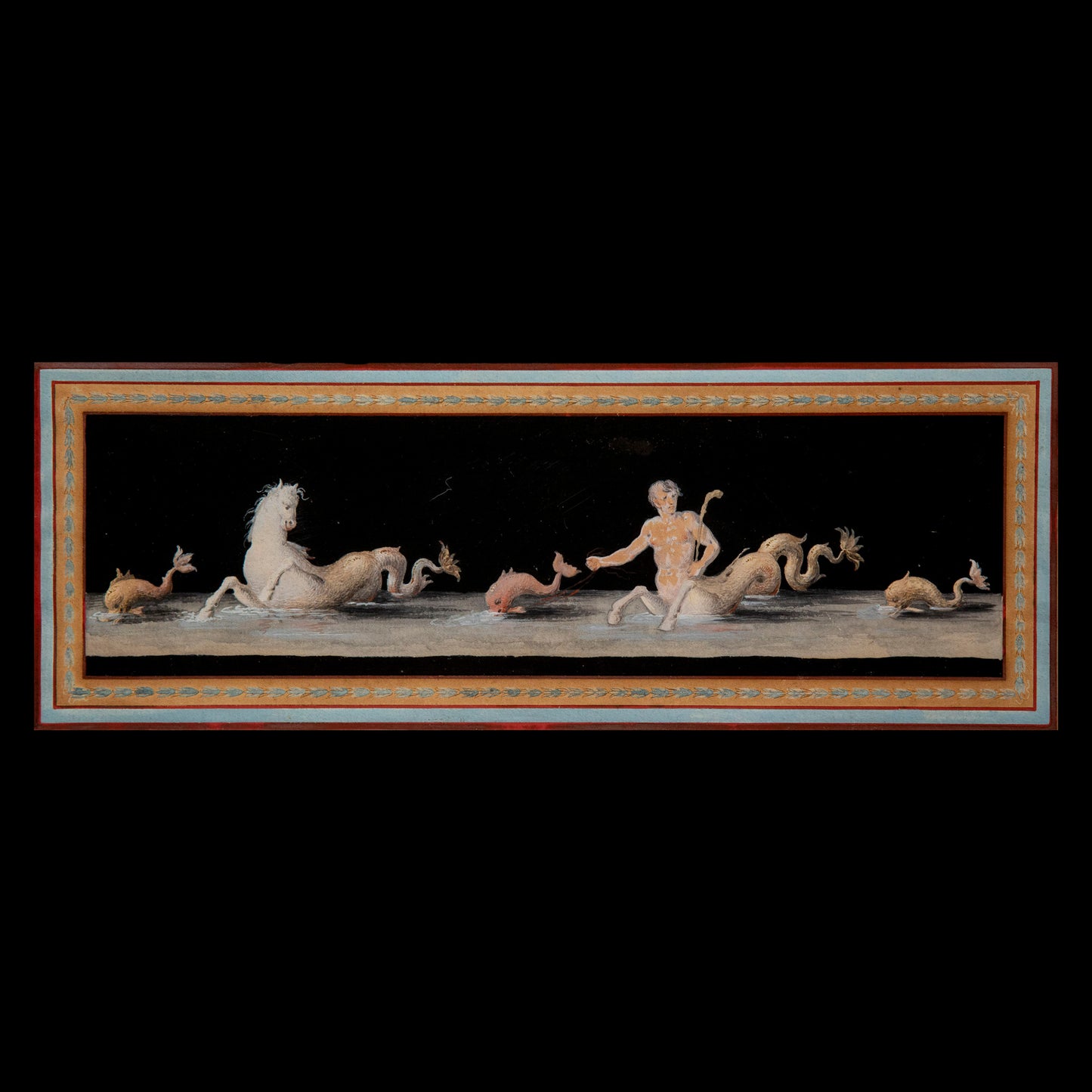
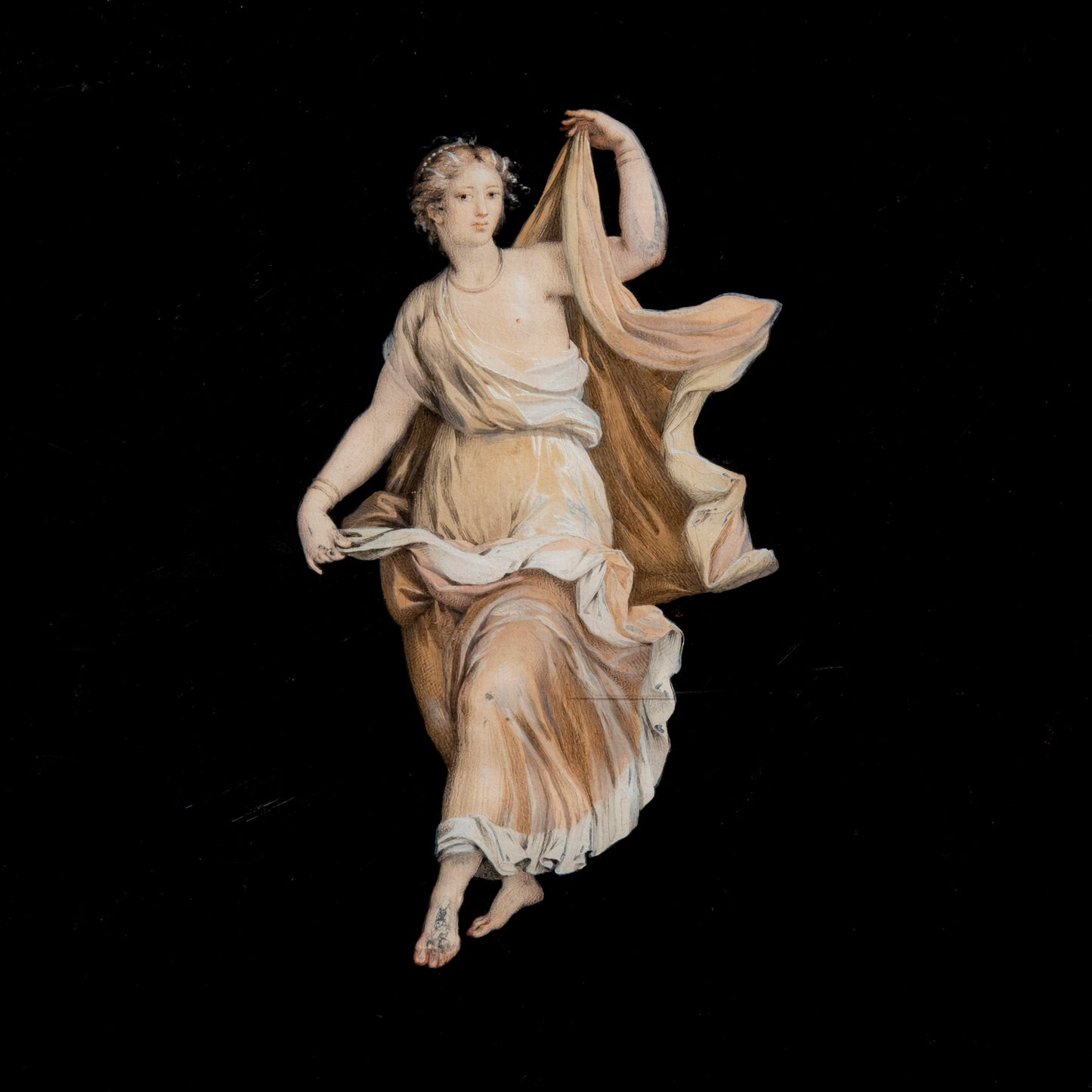

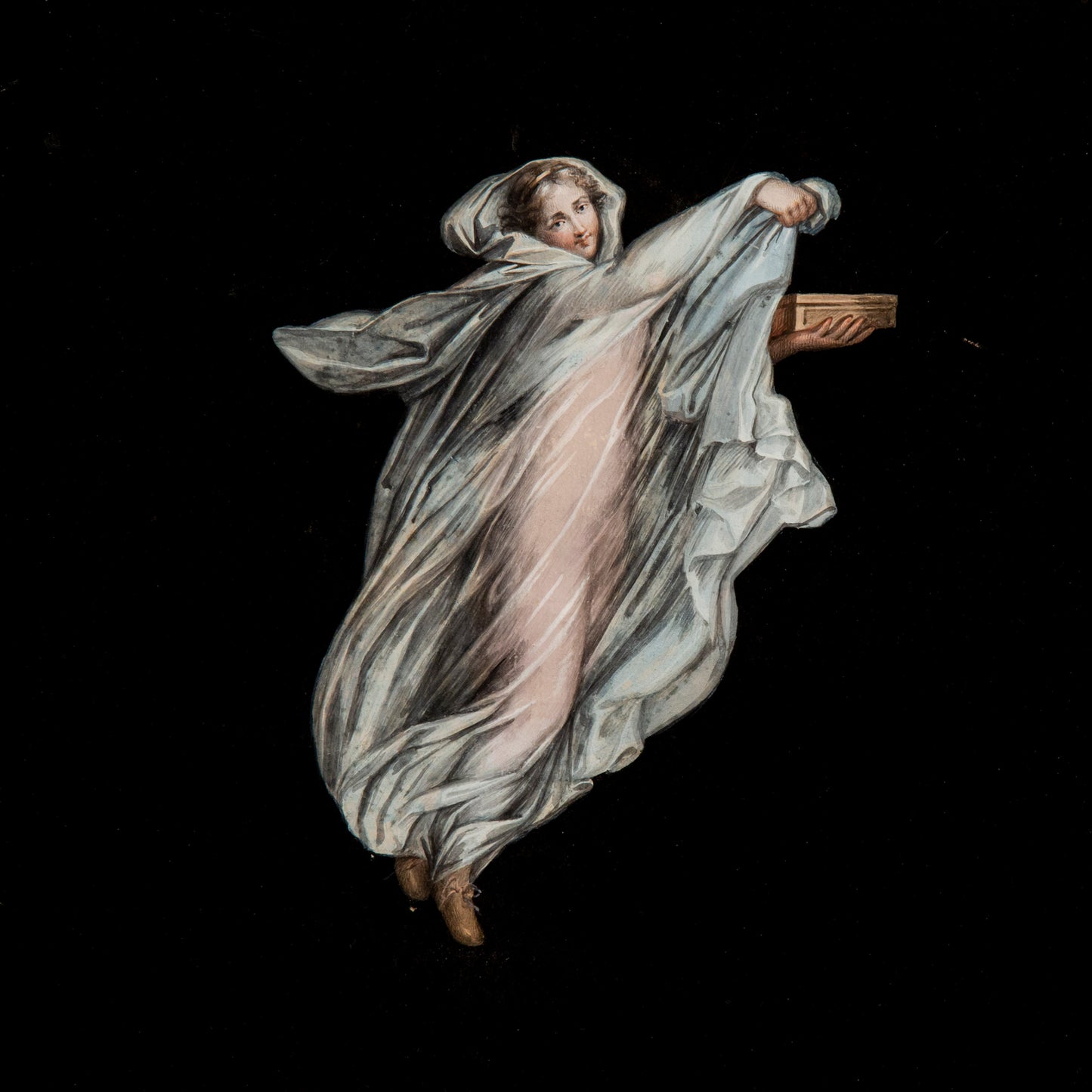
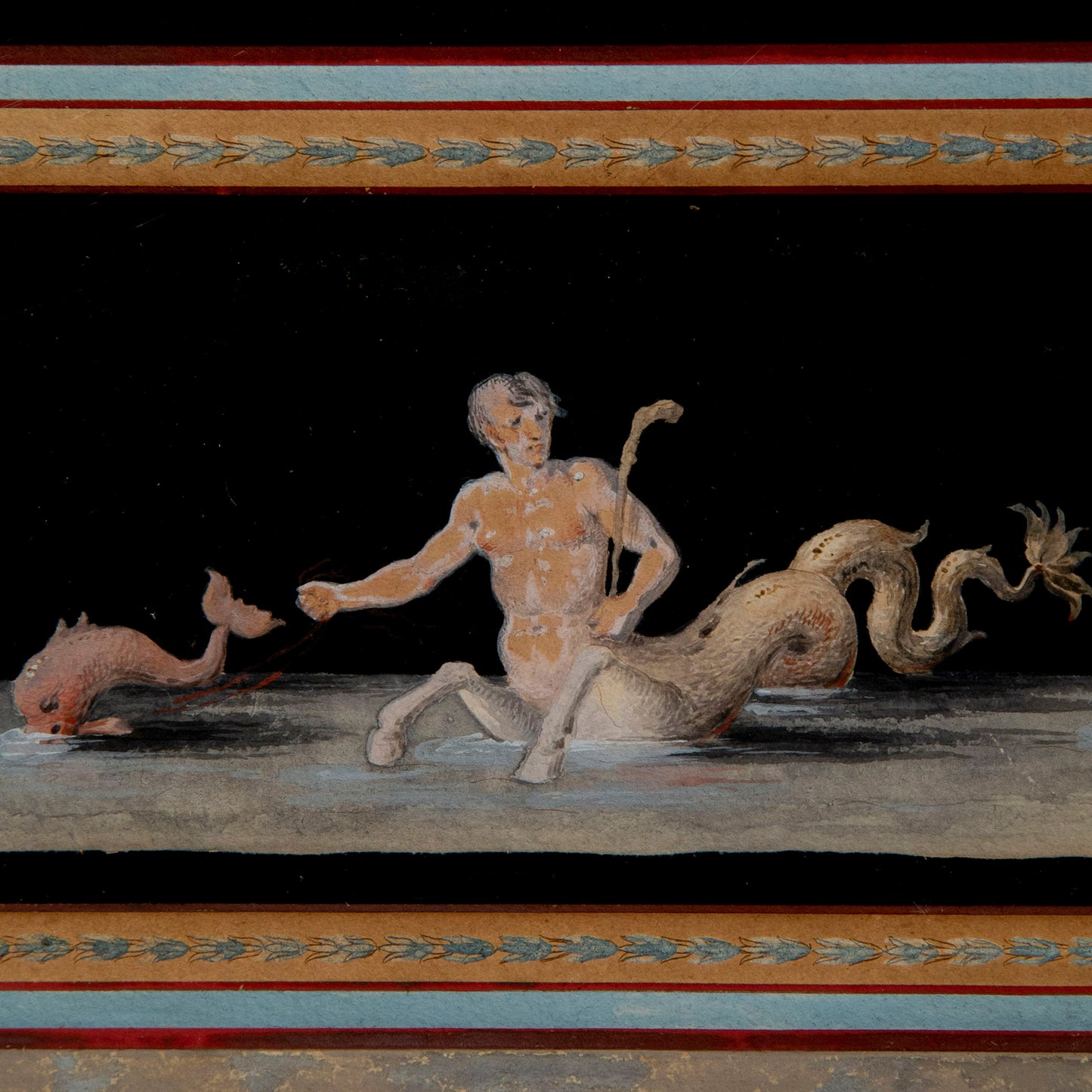

A pair of exquisite Grand Tour gouache paintings attributed to Michelangelo Maestri (d. 1812, Rome), from the series 'Hours of the day'
Circa 1790.
Why we love them
These gouaches are the ultimate evocation of the ancient Pompeii, corresponding to the fragments of frescoes excavated in the late 18th century.
Michelangelo Maestri is mainly known for his bodycolours that he based on the then only recently discovered wall frescos in Pompeii. The drawings, which were often made over etched outlines became very popular amongst travellers on their Grand Tour. These particular works are from the very popular series of The Hours of Day and Night, and are based on frescoes 'Dancers of Herculaneum' found in the triclinium of the so-called Villa of Cicero in Pompeii, that was excavated on 25 May 1748 to 18 January 1749. Now in Naples Archaeological Museum (inventory numbers 9295, 9297).
A set of six from the same series, including two identical gouaches, was sold Christie's London, 13 January 2016, lot 93 (£25,000).
Literature
Le Antichità di Ercolano Esposte, Naples, 1757–92
Niccolini F., 1862. Le case ed i monumenti di Pompei: Volume Secondo. Napoli. Tavolo V.
Amodio M., c.1880. Pompei, destroyed on 23 November 79, discovered in 1748
The Burlington Magazine, September 2009, p. 599, fig. 13–15
Ciardello R., La ricostruzione delle decorazioni dalla Villa di Cicerone a Pompei in AMOENITAS II, 2012, Roma


